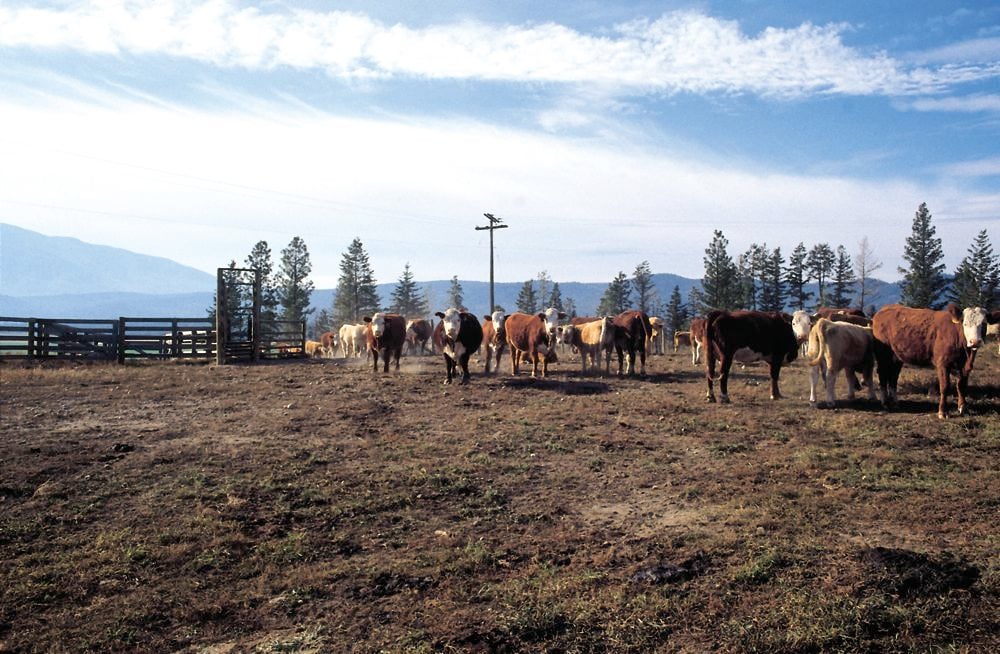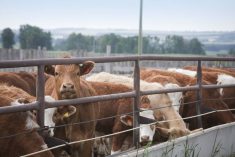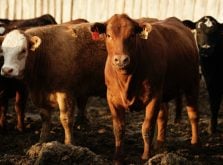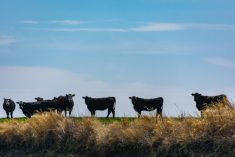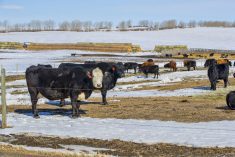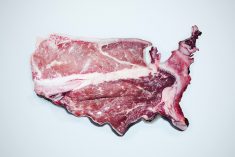First a look at the calf market
The calf market will likely remain flat through this October and November. After December, calves that come on the market generally have the option to be placed on grass next spring or moved to a finishing lot. The calf market during the spring of 2021 is expected to reach back up to 52- week highs. We’ve seen two consecutive year-over-year declines in the U.S. calf crop and 2020 will be the third year of contraction in Western Canada. Canadian barley stocks will drop to historically low levels at the end of the 2020/21 crop year so this will temper the upside in the feeder market. In any case, the fed cattle market is expected to trend higher through the winter of 2021/22 and feedlots will be anxious to secure ownership of calves during the spring of 2021.
Read Also

Harvest wraps up and fall work begins
At the Eppich famly ranch in western Saskatchewan, the fall harvest was successful with few breakdowns, cows and calves have been sorted and a new tractor has arrived
The backlog of market-ready supplies in Canada and U.S. will likely be cleaned up from December 2020 through March 2021. Fed cattle prices will trend lower in the second quarter of 2021 but the outlook for the third and fourth quarters of 2021 is for higher prices. Fed cattle values should be at two-year highs in the final two months of 2021. Calf prices will remain flat over the next few months. Don’t sell your calves during October 2020 because this will be the lowest prices of the year. From January forward, I’m expecting the calf market to percolate higher but the upside will be limited by the tight feed grain situation. Grass cattle are expected to be very strong next spring.
Fed cattle in Alberta
Alberta packers were buying fed cattle in the range of $132 to $134 FOB the feedlot in mid- September, down from the range of $138 to $140 during the third week of August. The fed cattle market continues to digest the severe backlog of market-ready supplies on both sides of the border.
Beef demand is slowly improving as the Canadian and U.S. economies continue to recuperate after the COVID-19 spring shutdown. However, constraints on gatherings and limitations on restaurant capacity continue to hinder consumption. Wholesale beef prices are down from year-ago levels as the market functions to encourage demand. The fed cattle market is expected to trade slightly higher moving forward as the burdensome supply situation is alleviated.

Yearling markets continue to trade at 52-week highs. According to Statistics Canada, yearling supplies are down from year-ago levels. The April 2021 live cattle futures have also been hovering around the highest levels since February, which has allowed feedlots to lock in profitable margins in the deferred positions.
Despite the stronger barley prices, we’ve haven’t seen any slippage in the yearling market. As of late September, larger-frame mixed steers just off grass in central Alberta were trading around $185, while similar quality 925-pound heifers were quoted at $174. The calf market is rather sluggish due to limited volumes; prices are similar to year-ago levels albeit down approximately $15 to $20 from the June 2020 highs.
The U.S. slaughter during August was similar to year-ago levels but the processed volume during September will likely finish below September of 2019. For the week ending September 19, the U.S. year-to-date slaughter was running 1.074 million head behind year-ago levels. The estimated backlog of market-ready supplies in U.S. feedlots at the end of August was estimated at 700,000 head.
In Canada, the weekly slaughter pace is running slightly below year-ago levels largely due to lower beef exports to the U.S. The year-to-date slaughter for the week ending Sept. 12 was 141,500 head behind last year. The estimated backlog of market-ready supplies in Canadian feedlots was estimated at 225,000 head at the end of August.
Optimism looking forward
While the current situation might appear depressing, there is optimism looking forward. The U.S. cow-calf producer and backgrounding operator held back on marketing during spring. Therefore, lower feedlot placements during the spring and summer will allow feedlots to clean up the backlog by the end of 2020. In the table of USDA’s quarterly production estimates, U.S. beef production during the fourth quarter of 2020 will be down from year-ago levels largely due to fabrication constraints at processing plants.
In the first quarter of 2021, beef production is expected to finish below year-ago levels due to the lower fed cattle supply situation. Second-quarter beef production has potential to reach 6.9 to 7.0 billion pounds, which could be a record for this timeframe.
After a brief period of tighter supplies, beef production will be burdensome in the second quarter and result in lower fed cattle prices. Longer term, 2021 third- and fourth-quarter production is projected to come in below 2020 levels. This will result in stronger yearling prices next spring because fed cattle prices have potential to be near two-year highs during the final quarter of 2021.
Yearling prices have been very strong over the past month but we’ll likely see prices soften moving forward. Late in November, yearlings will only be ready for the fed market after April 2021. The burdensome beef supply projections for the second quarter of 2021 will set a negative tone for 850-pound-plus cattle from November forward.


